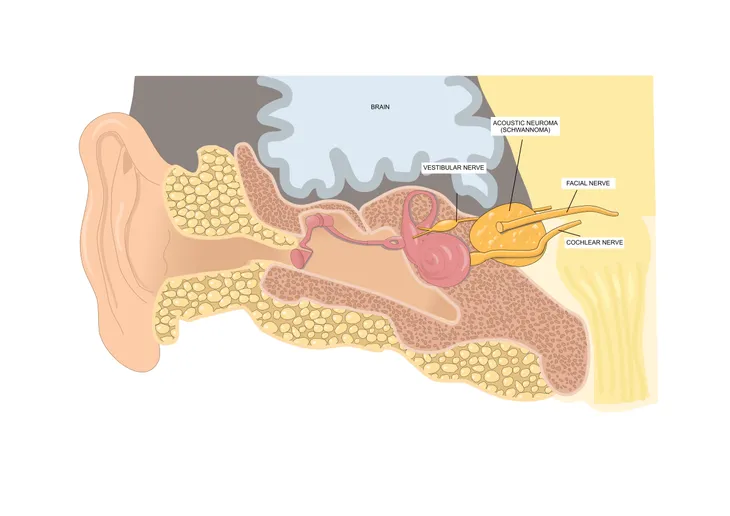There are approximately 23,000 new brain cancer diagnoses each year in the U.S. These brain masses develop when abnormal cancer cells accumulate in one area—in this case, the brain. Primary brain tumors originate in the cells and tissues that make up the brain and central nervous system.
Medical science can’t pinpoint exactly what causes the develop brain tumors. However, there are common factors that make some people more susceptible than others. For instance, age puts people 65-years of age and over at a 4 times higher risk of brain tumor development. Also patients with existing genetic conditions, such as neurofibromatosis or Li-Fraumeni syndrome, and children who receive radiation treatments in the head area are more prone to tumors in adulthood.
In all, there are approximately 100 different types of brain tumors, named for the type of cell they originate from. The most common are as follows…
1. Gliomas
Approximately 30-percent of all brain tumors are glioma tumors, which originate in the brain or spine. Gliomas also make up 80-percent of all malignant brain tumors. This tumor is named glioma because it develops in the glial cells—specifically the astrocytoma, ependymoma, oligodendroglioma cells, or a combination of these. As a glioma brain tumor grows, it may cause headaches, nausea and vomiting, seizures, and vision problems if it places pressure on the optic nerve. The treatment and removal depends on the tumors placement. For instance, depending on how close it is to the patient’s delicate brain stem, the tumor may only be partially removed to avoid brain damage.
2. Craniopharyngiomas
Craniopharyngiomas most often afflict children, teens, and young adults. These tumors form near the base of the brain, typically above the pituitary gland, causing a domino effect of health issues as they amass—including eyesight issues or total loss of vision (if they push on the optic nerve), weight gain, delayed physical development, and stunted hormone levels.
3. Lymphomas
Lymphoma tumors can develop in the brain in response to cancer of the lymphatic system due to Hodgkin’s disease, which occurs when white blood cells (or lymphocytes) become cancerous. These types of cerebral lymphomas can also develop in individuals with low immune systems—as a result of AIDS or following a major surgery (i.e., organ transplant).
4. Hemangioblastomas
Hemangioblastomas is typically genetic, meaning it’s prone to individuals with a family history of von Hippel Lindau syndrome (vHL), a disorder characterized by the development of fluid-filled cysts (or tumors) in different areas of the body. Hemangioblastomas tumors often develop in elder teens and young adults on the brain stem, but they don’t tend to spread. These tumors rarely become cancerous and only account for 2-percent of brain tumors, which makes them difficult to treat.
5. Meningiomas
Meningiomas account for 25-percent of adult brain tumors. They develop in the tissues (more membranes) that surround and protect the brain, invading surrounding brain tissue and reoccurring even after surgical removed. However, luckily, the majority of meningiomas are benign, or non- cancerous.
6. Acoustic Neuromas
Acoustic neuromas most often develop in elderly individuals. And because they affect balance and hearing (both common to aging) they often go undiagnosed for lengthy periods. These slow-growing tumors tend to develop on the nerve that runs from the ears to the brain, which is why hearing and balance are affected. The most telltale sign of a present acoustic neuromas tumor is loss of hearing in one ear.
7. Pineal Region Tumors
Pineal region tumors are rare, making up only 1-percent of all brain tumors. They grow on the pineal gland, located just behind the top of the brain stem, restricting the body’s production of melatonin hormone. Common symptoms of pineal region tumors include inflammation and pressure inside the skull, issues with coordination and balance, enlargement of the skull, headaches, vomiting, and eyesight problems.
8. Germ Cell Tumors
Most germ cell tumors develop outside the brain (in the chest or abdomen), but 2-percent still account for brain tumors that latch onto the pineal area of the brain, blocking fluid circulation. Germ cell tumors grow mostly in patients’ 10- to 18-years of age. Luckily, because this type of tumor emits certain chemicals; doctors can test for germ cell tumors using a simple blood test.
9. Pituitary Tumors
Pituitary tumors account for 10-percent of all brain tumors. They amass in the pituitary gland, which is located right underneath the brain and directly behind the eyes. Due to the fact that the pituitary gland is the body’s master control, meaning it manages hormone release into the bloodstream, sending messages to vital organs such as the thyroid, ovaries, and testicles—pituitary tumors can cause a whole array of health woes—from vision loss to weight gain or loss and from mood swings to lowered sex drive. Luckily, the majority of pituitary tumors are benign.
10. Primitive Neuroectodermal Tumors
Primitive neuroectodermal tumors (or PNETs) grow when a surplus of cells develop and accumulate in the womb, becoming cancerous in childhood and early adulthood. Medulloblastomas, the most common PNET, develop in the cerebellum and can quickly spread to other area of the brain as well as to the spinal cord. Symptoms of PNETs include vision and balance problems, morning headaches, nausea and vomiting, seizures, mood swings, and unexplained weight gain or loss.













